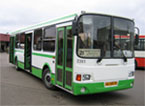
Restructuring transit for lower emissions exposure
May 28, 2009
By Carolyn Yates
Taking both health and fuel concerns into account when designing public transit routes has the potential to halve exposure to emissions
Opening the second session of the AUTO21 Advanced Technology Sessions at the APMA-AUTO21 conference, University of British Columbia and Giro Inc. researchers discussed the possibility of encouraging drivers to find alternate means of transportation doing more harm than good, particularly if those alternatives increase exposure to harmful emissions.
“Consideration of exposure can be integrated into existing bus frameworks,” said Francis Ries, of the Institute for Resources, Environment and Sustainability at the University of British Columbia.
The discussion focused on the 99 B-Line, Vancouver’s busiest bus route. In the scenario, four garages supported 1,746 trips a day.

A power profile of the route, relating the mass, grade, acceleration and velocity of the vehicle, shows that bus stops are part of the hot spots for exposure to nitrogen oxides, as both the people around the bus and – once the doors open – in it are exposed. The 99 B is also a rapid-transit route, giving it the highest level of emissions exposure in Vancouver.
The busses on routes were first assigned based only on size, next while considering fuel consumption and finally while considering both fuel consumption and health impact. While there was an increase of two hours of unproductive time when considering fuel and health, exposure was reduced by more than 50 percent. The scenario used only Vancouver’s existing infrastructure and a ration of diesel, advanced and hybrid vehicles that is representative of the city’s busses as a whole.
Currently, bus investments are far from optimal, Ries said, and focusing on technology would improve levels of exposure.
“In the case where exposure does matter, we’re using all our available advanced technology busses and we’re using them as long as we can.”
He also noted that existing technology can, in some cases, be modified instead of replaced and still significantly decrease exposure to emissions.
“There is potential, with our older busses, to retrofit them and move them from where they are in respect to particular emissions down to the level of an advanced bus, and this can be done at a relatively low cost…As we have tested it, we reduced exposure to emissions at minimal operational cost.”
For more information, visit AUTO21 at www.auto21.ca or the APMA at www.apma.ca.